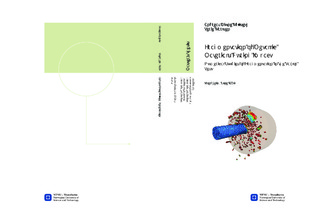| dc.contributor.advisor | Børvik, Tore | nb_NO |
| dc.contributor.advisor | Hopperstad, Odd Sture | nb_NO |
| dc.contributor.advisor | Rakvåg, Knut Gaarder | nb_NO |
| dc.contributor.author | Karlsen, Terje | nb_NO |
| dc.contributor.author | Kjølseth, Andreas Bjune | nb_NO |
| dc.date.accessioned | 2014-12-19T12:01:04Z | |
| dc.date.available | 2014-12-19T12:01:04Z | |
| dc.date.created | 2012-11-08 | nb_NO |
| dc.date.issued | 2012 | nb_NO |
| dc.identifier | 566225 | nb_NO |
| dc.identifier | ntnudaim:7952 | nb_NO |
| dc.identifier.uri | http://hdl.handle.net/11250/237037 | |
| dc.description.abstract | This thesis is written in relation to the current research at SIMLab in the field of impact engineering. An overall objective is to establish a general numerical model for predicting and simulating the fragmentation process of metallic materials during impact. Previously conducted experiments at SIMLab revealed that blunt nosed projectiles of hardened ARNE tool steel may be fragmented, when struck against thick target plates at certain velocities. Two preceding M.Sc. theses have been written at SIMLab on the same topic, and provided an experimental basis for evaluation of the present numerical results. Simulations were carried out using the nonlinear finite element codes IMPETUS Afea Solver and LS-DYNA. Series of 20 tensile tests were conducted for ARNE tool steel, hardened to nominally Rockwell C values of 40 and 52. A significant variation was found in the failure strain for both materials. Modified Johnson-Cook constitutive models were directly calibrated from the tests, in combination with stochastic failure models based on the Cockcroft-Latham criterion. Numerical simulations of the tensile tests were in good agreement with the experimental observations. Fractography unveiled fracture surfaces with both ductile and brittle characteristics in in the hardened projectiles. A brittle failure criterion was inversely calibrated based on previously conducted bending tests. Previously conducted Taylor tests, which induced fracture and fragmentation, were attempted simulated with the calibrated material models. The simulated plastic deformations in the unhardened projectiles were described in very good agreement with experimental observations. Both element erosion and node splitting have successively been used to model material failure. It became evident that a stochastic variation of the failure parameter can give good results, and seems necessary for capturing the fragmentation process in a brittle metallic material. Node splitting in combination with cubic 64-node elements seems to give good results when the problems are dominated by tension, while element erosion and small linear elements are more suitable for problems dominated by compressional stresses and shear fractures. | nb_NO |
| dc.language | eng | nb_NO |
| dc.publisher | Institutt for konstruksjonsteknikk | nb_NO |
| dc.subject | ntnudaim:7952 | no_NO |
| dc.subject | MTBYGG Bygg- og miljøteknikk | no_NO |
| dc.subject | Beregningsmekanikk | no_NO |
| dc.title | Fragmentation of Metallic Materials During Impact: Numerical Studies of Fragmentation in the Taylor Test | nb_NO |
| dc.type | Master thesis | nb_NO |
| dc.source.pagenumber | 166 | nb_NO |
| dc.contributor.department | Norges teknisk-naturvitenskapelige universitet, Fakultet for ingeniørvitenskap og teknologi, Institutt for konstruksjonsteknikk | nb_NO |
